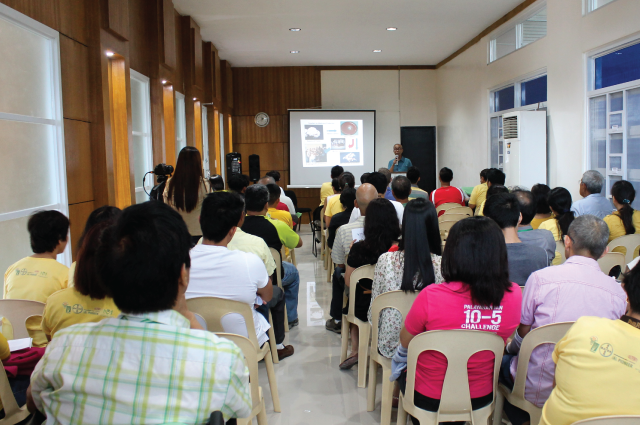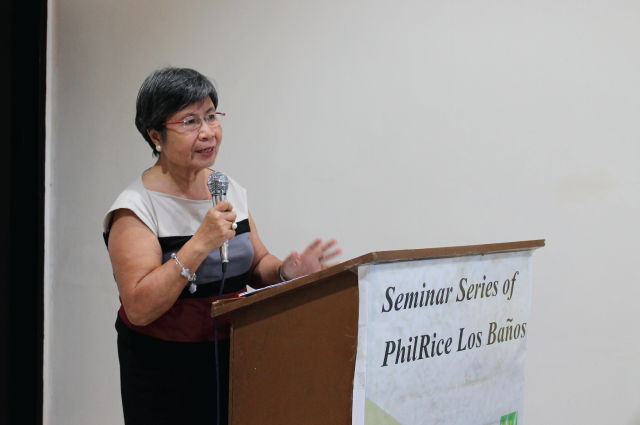 The Philippine Rice Research Institute (PhilRice) in Los Baños, Laguna featured rice-based farming systems that boost farmers’ income in their first quarterly seminar series, April 6.
The Philippine Rice Research Institute (PhilRice) in Los Baños, Laguna featured rice-based farming systems that boost farmers’ income in their first quarterly seminar series, April 6.
With the theme, Exploring the benefits of diversified rice-based farming for food security and increased income, the seminar gathered experts from PhilRice collaborators in the scientific community such as UP Los Baños (UPLB), Central Luzon State University (CLSU), Bureau of Fisheries and Aquatic Resources (BFAR), and Philippine Carabao Center – UPLB.
Featured technologies include rice-mushroom, rice-nostoc, rice-prawn, and rice-dairy.
Dr. Sofronio Kalaw of CLSU discussed about mushroom production on rice straw-based substrates. Kabuteng dayami or scientifically known as Volvariella volvacea is one of the edible mushroom species that can be grown in the Philippines.
To discourage farmers from burning rice straw, his team promotes its use for mushroom production instead.
“As a food, mushroom is rich in protein, carbohydrates, crude fiber, minerals, and vitamins,” Kalaw said.
Another protein-rich food from the rice paddies is Nostoc commune, locally known as tab-taba in Northern Luzon. It is a greenish and gelatinous algae commonly used as food in the rural areas that can be made as a marketable delicacy.
 According to Dr. Milagrosa Martinez-Goss of UPLB, tab-taba can also improve soil fertility and texture.
According to Dr. Milagrosa Martinez-Goss of UPLB, tab-taba can also improve soil fertility and texture.
Meanwhile, the integration of ulang (freshwater prawn) and rice in one paddy field generates an added income for the farmers. Palay-ulangan or rice-prawn farming system can gross at least P120, 000.
“The concept of palay-ulangan is to promote the efficient use of water through prawn culture and rice production. Added income will not just come from a higher yield from rice but also from the prawn,” said Virginia Panisales of BFAR Region 4-A.
For smallholder farmers, dairying was also featured as a regular source of income. Rice straw can be used as forage for buffaloes. Consequently, manure from buffaloes can be used for vermicomposting.
According to Jose Canaria of PCC-UPLB, milk production from crossbred buffaloes can give farmers an added P45,000 to their annual income.
“Transforming into a dairy community ensures food security, generates employment, and contributes to social development,” Canaria emphasized.
The seminar series aims to strengthen the Institute’s Intensified Rice-Based Agri-Biosystems (IRBAS) program and the Rural Transformation Movement. These initiatives are intended to increase farmers’ income and ensure food security in the Philippines.




